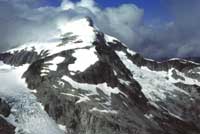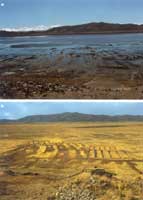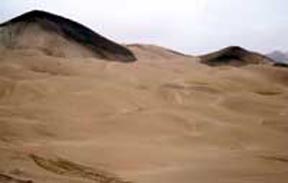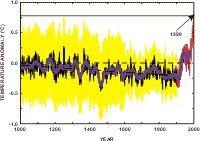 |
||||||||||||||
|
|
||||||||||||||
|
Paleoclimatology
|
Spring Semester 2017 |
|
|
The goal of this course is to present an overview of the methods used to reconstruct the Earth's climate history and the techniques used to determine the timing of environmental changes. Paleoclimate data from proxy records, such as ice cores or tree rings, provides a longer perspective on climatic variability than is possible from instrumental or historical records. The graph above shows the rapid increase in the average Northern Hemisphere temperature during the last century with respect to the last 1000 years, and the dramatic warming in the most recent decades. Is this change related to natural variability or caused by human activities? Particular emphasis will be given to the climatic changes during the late Cenozoic. Topics to be discussed will include: paleoclimatic reconstruction, climate and climatic variation, dating methods, ice cores, marine and sediments, corals, spelothems, soils, pollen, dendrochronology, documentary data, and paleoclimate models. |
 |
 |
||
 |
|||
How has the distribution of glaciers, deserts, and lakes changed through time and how is this related to climate variation? How do you determine how precipitation has varied in the past from lake
sediments? These and other questions regarding climate change will be addressed in this class. Lecture 1 Lecture 2 Lecture 3 Lecture 4 Lecture 5 Lecture 6 Lecture 7 Review for Exam 1 Lecture 8 Lecture 9 Lecture 10 Lecture 11 Lecture 12 Lecture 13 Lecture 14 Lecture 15 Review for Exam 2 |
|
This site is best viewed at 1024x768 resolution. |
